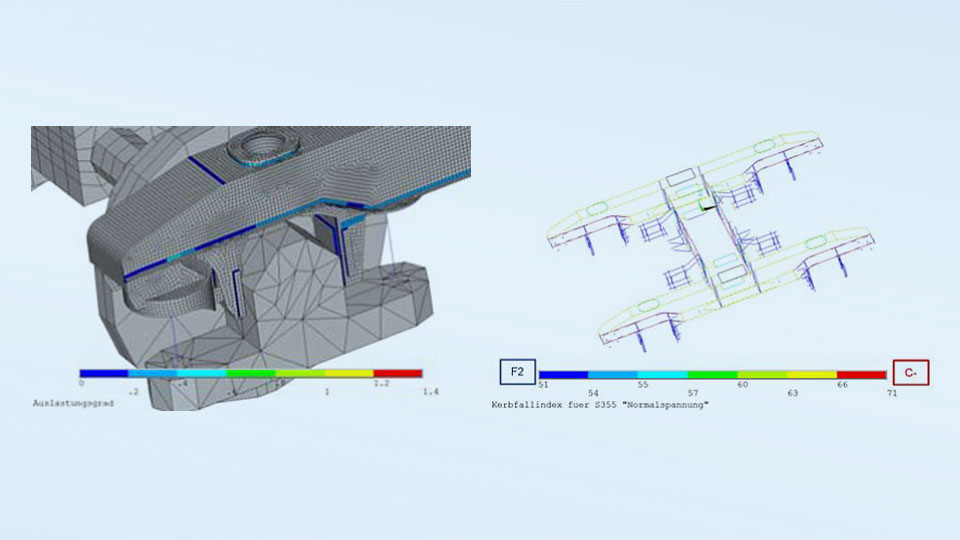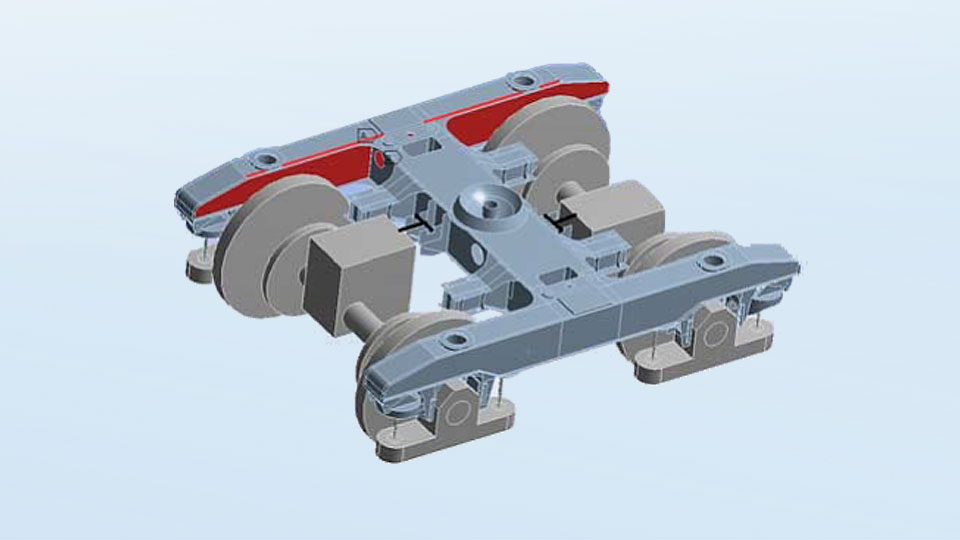Efficient weld seam evaluation with Ansys
Sector: Rail vehicle constructionSpecialist field: Scalability of simulations, Structural mechanicsROBEL Bahnbaumaschinen GmbH designs and manufactures machines and equipment for track construction. To increase efficiency, the workflow for calculating and evaluating welded joints with Ansys Workbench and with the Ansys APDL scripting language have been automated.
Summary
Task
Due to the large number of seam welds (several thousand), manual consideration and evaluation of all of them is not economically feasible.
Solution
To increase the efficiency, the workflow for the calculation and evaluation of the welded joints was automated with Ansys Workbench and with the Ansys APDL scripting language.
Customer benefits
With the specially developed evaluation functionality in Ansys, the validation of the welding seams, conforming to DVS 1612, can be performed in less time.
Project Details
Task
ROBEL Bahnbaumaschinen GmbH designs and manufactures machines and equipment for track construction and for the maintenance of the superstructure. These are mainly welded assemblies. They must comply with the relevant standards (such as EN 15085, EN 12663, EN 13749). DVS 1612, amongst others, is also used for the evaluation of welded joints. The number of weld seams to be taken into account for such machines is sometimes in the four- or even five-digit range.

Customer Benefit
Due to the large number of seams (several thousand), a manual consideration and evaluation of all welding seams is not economically feasible. With the evaluation functionality in Ansys developed especially for ROBEL, the validation of the welds can be performed in a shorter time in conformity with DVS 1612. In addition, there is a considerable increase in confidence with respect to the safety of the validation and a reduction in the effort required to produce the documentation for submission to and acceptance by the authorities.

Solution
The workflow was automated with Ansys Workbench and the Ansys APDL scripting language. Assembly by assembly, a mid-surface model is built from the CAD model in Ansys. In this model the welds are recognized at contact definitions and in cross-linked edges of shell assemblies in order to verify the static and cyclic strength (according to DVS 1612 or similar). For the weld seam properties, such as the notch drop class and seam thickness, the worst case is initially assumed for a preliminary evaluation (i.e. worst notch drop line, possible one-sided a-measurement according to EN 15085 and worst combination of inhomogeneous material). At the critical points, the properties can then be adjusted to the actual conditions. The verification is carried out according to the standard with load case superpositions that can be combined in any way (according to EN 12663, EN 13749, etc.). The results can be displayed graphically on the shell model and also in tabular form, so that the information is available for further consideration, e.g. for the input and evaluation of alternative cross-sectional data of the seam.
Images: © ROBEL




